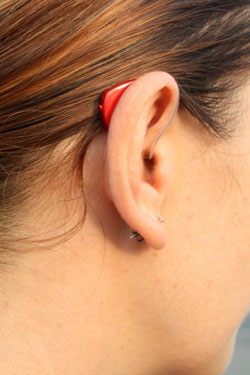What You Need to Know to Make the Right Decision
Choosing the right type of hearing aid is a personal process that requires thorough consultation with a hearing professional, to book an assessment, please contact one of our Hearing Loss Clinic locations.
To see the different types of hearing devices we offer at the Hearing Loss Clinic, please click on our Products page.
Your Hearing Loss Characteristics
The nature and severity of your hearing loss will play a large role in determining which hearing instruments can offer the best listening experience.
 Your Lifestyle
Your Lifestyle
Consider your work and free-time activities. Does your hearing loss make any of these particularly challenging or even impossible? Now define your needs and set some priorities. The characteristics of your primary listening environments may also help narrow your options.
Your Technology Needs
Today’s hearing aids cover a wide range of designs and degrees of sophistication. Some models have manual volume controls. Others automatically adjust to new listening situations.
Most hearing aids process sound digitally and allow for fine-tuning to suit a wearer’s specific hearing needs. Many use multiple microphones to filter out background noise and facilitate conversation.
Sound quality is the most important consideration in choosing a hearing device. But not every technological advance benefits every hearing loss, and even basic hearing instruments can deliver appropriate sound quality. Ask your hearing professional to help you assess the level of sophistication you need.
Your Physiology
Physical factors can influence your selection of a hearing instrument. The shape and size of the ear canal can make wearing a particular style difficult for some individuals. For example, if your canal is extremely narrow, an in-the-canal instrument may not be the best fit.
One Ear or Two?
 If your hearing loss affects just one of your ears, you may only need one hearing instrument. Although age- and noise-related hearing loss tend to affect both ears, your hearing profile for each ear will likely be different.
If your hearing loss affects just one of your ears, you may only need one hearing instrument. Although age- and noise-related hearing loss tend to affect both ears, your hearing profile for each ear will likely be different.
In general, a binaural (two-ear) approach is most effective. It helps a wearer distinguish between sounds more easily and determine which direction a sound is coming from. In addition, some of the benefits of today’s digital technology are only possible with a binaural system.
Today, about two-thirds of new hearing aid wearers opt for dual hearing instruments. As a group, these wearers report a higher level of satisfaction than those who purchase a single instrument.
Ease of Use
The smallest hearing instruments are the most discreet, but they can also be more difficult to operate. If you experience vision or dexterity challenges, you may want to consider a larger device or try one that adjusts automatically.
Instrument Appearance
Hearing instruments come in a variety of sizes and styles. Some instruments fit discreetly behind your ear, while others are so small that they’re almost entirely hidden. Remember: Others will be far less aware of your instrument than you are.
Value and Pricing
Your hearing aid is much more than a piece of plastic that houses state-of-the-art technology. It’s an investment in your quality of life in the ability to fully participate in your relationships, work and activities.
Think about what you value most in a hearing solution. Is it the latest technology? Is it comfort or ease of use? Defining your priorities and expectations will help you decide how much you’re willing to spend for your hearing instrument.
Hearing instruments generally run from several hundred to a few thousand dollars (pricing varies between hearing professionals). Typically, prices reflect the amount of research and development that has gone into the product, as well as the quality of its components.
The smallest, most technologically advanced instruments are sometimes the most costly. However, most people can find a quality hearing instrument that suits their needs in a relatively modest price range.
The cost of an instrument may or may not include the services of your hearing professional such as testing, earmold impressions, fitting and follow-up care. Make sure you understand what’s included so you can make an informed decision.
Professional Expertise
The quality of your hearing experience will depend largely on the service and follow-up care you receive after purchasing the hearing device. That’s why it’s important to work with a licensed hearing professional and manufacturer who can provide the reliability and quality you deserve.
Warranty and Service
At the Hearing Loss Clinic, we proud ourselves in the service provided after you are initially fitted for your hearing aid.
Most hearing aids come with a warranty and return guarantee. Before you make a purchase, ask questions about a device’s warranty, including:
- Length of warranty
- Possibility of warranty extension
- Details about what is covered and what is not
- Whether or not replacement devices are issued during repair
- Return guarantee
- Hearing loss change protection
- Follow-up care
- Patient hotline
- Battery program
Return Policy
A reputable hearing aid manufacturer will often provide a 30-day return policy. However, return policies vary from province to province. Check with your hearing professional for details, including the amount of any applicable non-refundable preparation fees. This type of service can be reassuring when you’re making such an important decision.
Financing Options
Your expenses may or may not be covered under your normal insurance plan, so look for a hearing professional with flexible financing plans.
Insurance Coverage
Check with your health care provider to find out what hearing health benefits you can expect with different types of hearing devices.